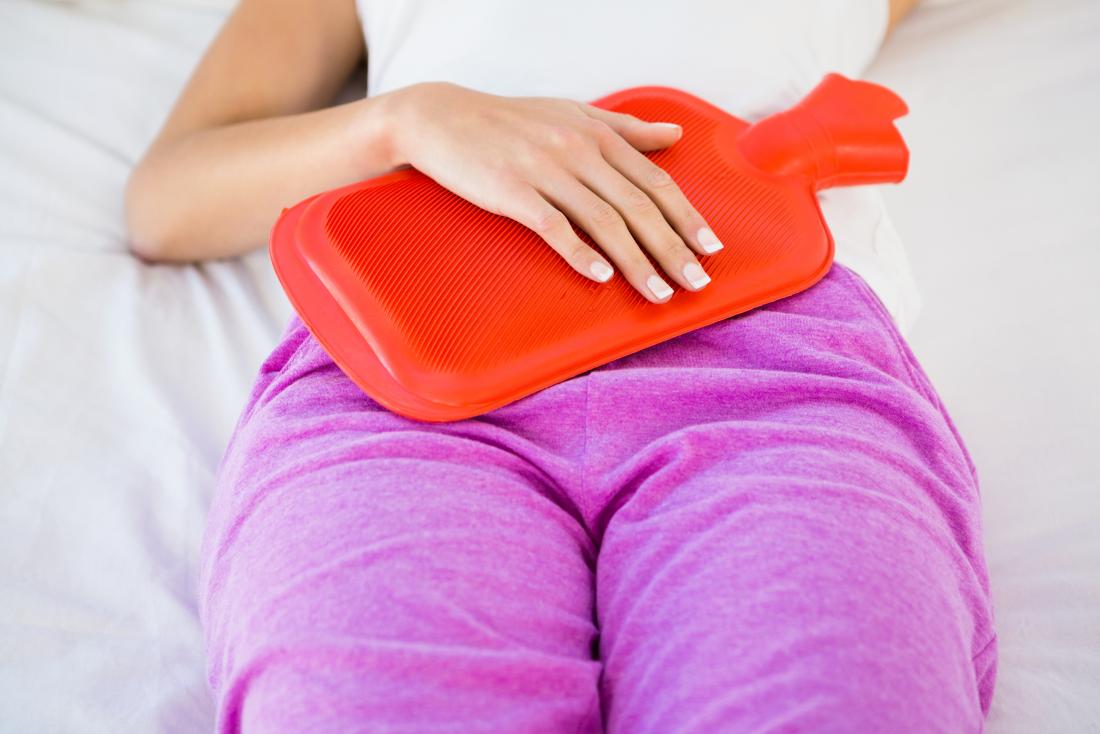Endometriosis
Endometriosis is a condition in which womb tissue grows outside of the womb, often in the ovaries and fallopian tubes. It’s a long-term condition that affects people of all ages. The cause of endometriosis is not known, but experts believe it could be caused by immune system problems, genetics, or endometrial cells spreading throughout the body via the bloodstream or lymphatic system.
Other than painful period cramps, people with endometriosis might experience more general pelvic pain, sickness, and difficulty getting pregnant, among other symptoms. There’s no cure for the condition yet, but some people find that treatments help to ease their symptoms. Common treatments include hormonal pills, painkillers, and surgery to remove endometriosis tissue.
Polycystic ovary syndrome (PCOS)
Polycystic ovary syndrome (PCOS) is a common hormonal condition that affects how the ovaries work. Symptoms usually become apparent in those who have the condition when they’re in their late teens or early 20s. While the cause of PCOS is unknown, it often runs in families, and is related to hormonal imbalances including high levels of insulin.
Symptoms of PCOS include weight gain, oily skin, infertility, excess body hair and painful periods, among other symptoms. Treatments include hormonal medicines to manage excess hair growth and irregular periods. If medicines prove ineffective, some people undergo laser surgery to remove parts of the tissue in the ovaries.
Pelvic inflammatory disease (PID)
Pelvic inflammatory disease (PID) is an infection of the reproductive system. It’s usually caused by bacteria that enters into the reproductive organs, most often as a result of a sexually transmitted infection (STI). However, it can also be caused by bacteria that naturally occurs in the vagina.
Along with painful and heavy periods, PID can cause pain when urinating and during sex, as well as general pelvic discomfort. There are many symptoms of PID, many of them overlapping with endometriosis and PCOS. PID is treated with a course of antibiotics, which is very effective if the infection is detected early.
What should you look out for?
While period cramps are normal, they shouldn’t be so severe that they interfere with your daily tasks even after you’ve taken over-the-counter painkillers. Seek medical assistance if your cramps are particularly painful, particularly if they’ve changed in severity or you’re experiencing additional abnormal symptoms.
This article was written for WHN by Hannah Williams who is a consultant, researcher, digital content creator, media blogger, and health advocate.
As with anything you read on the internet, this article should not be construed as medical advice; please talk to your doctor or primary care provider before changing your wellness routine. WHN does not agree or disagree with any of the materials posted. This article is not intended to provide a medical diagnosis, recommendation, treatment, or endorsement. These statements have not been evaluated by the Food and Drug Administration.
Opinion Disclaimer: The views and opinions expressed in this article are those of the author and do not necessarily reflect the official policy of WHN/A4M. Any content provided by guest authors is of their own opinion and is not intended to malign any religion, ethnic group, club, organization, company, individual, or anyone or anything.
Content may be edited for style and length.
References/Sources/Materials provided by:
https://www.treated.com/understanding-period-pain/
https://www.who.int/news-room/fact-sheets/detail/endometriosis




